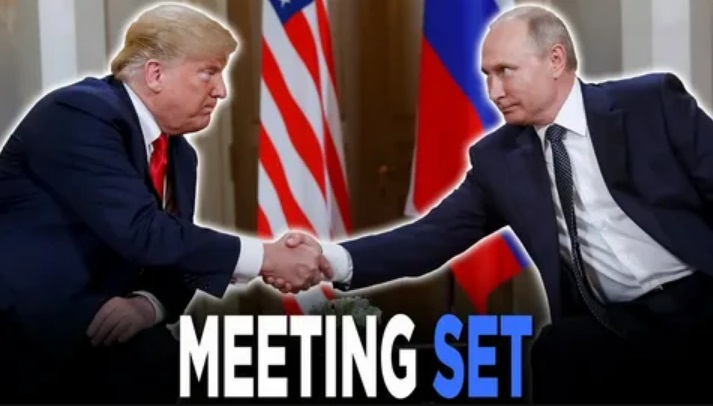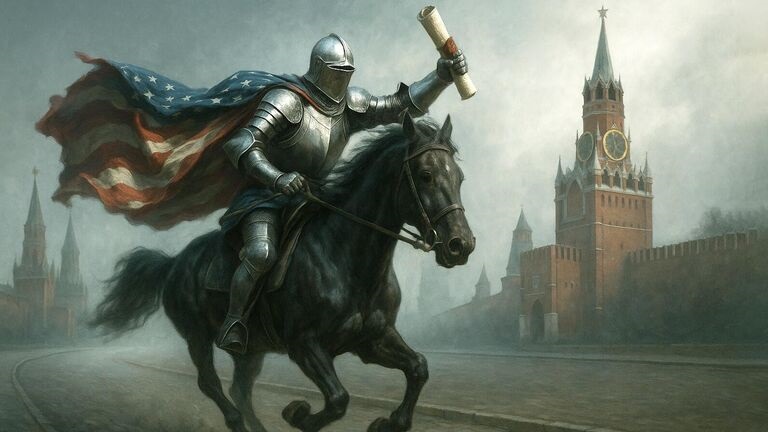
President Donald Trump said he’ll be meeting with Russian President Vladimir Putin next Friday in Alaska after earlier in the day previewing terms of a potential peace deal to end the war in Ukraine that could include “some swapping of territories,” CNN reports.
Ukraine’s Zelensky quashed the idea of any territory formally changing hands.
US officials, including Trump, have briefed European leaders and Ukrainian officials on a plan offered by Putin to halt the war in Ukraine in exchange for significant territorial concessions by Kyiv, according to Western officials briefed on the matter.
The plan, which Putin presented to Trump’s foreign envoy Steve Witkoff in a meeting in Moscow on Wednesday, would require Ukraine to cede the eastern Donbas region — the majority of which is currently occupied by Russia — as well as Crimea.
But the plan appeared to be the impetus for which Trump put in motion plans for a summit meeting with Putin. The Russian leader hasn’t been to the US in nearly a decade, when he met with then-President Barack Obama at a UN General Assembly meeting in September 2015.
In his statement after Trump’s announcement, Zelensky said: “Any decisions that are against us, any decisions that are without Ukraine, are also decisions against peace.
“These are dead solutions. They will never work. And we all need a real, living peace that people will respect.”
The Kremlin’s Presidential Aide Yury Ushakov confirmed the meeting in Alaska, adding that it “seems quite logical” for such an important summit to take place in Alaska with the Russian delegation simply flying over the Bering Strait and the two countries’ maritime border.
Ushakov revealed Russia has already invited Trump for a follow-up meeting in Russia.
Nor was it clear how Putin’s proposal would address the Russian leader’s other demands for ending the war, including a pledge that Ukraine never join NATO or that it limit the size of its military.
In his conversations, Witkoff has told European officials that the proposal put forward by Putin was a step in the right direction, and that a larger peace plan could be negotiated once the fighting is stopped.
The United States has been trying to get allies to agree to this plan, one source said, though it’s still unclear that will happen.
“The European leaders want to see peace,” Trump told reporters at the White House before announcing the Alaska meeting. “President Putin, I believe, wants to see peace, and Zelensky wants to see peace.”
He later added: “My instinct really tells me that we have a shot at” peace.
But the prospect of Ukraine ceding any of its territory to Russia could prove a major stumbling block in negotiating an end to the war. Such concessions are against the Ukrainian constitution, meaning Zelensky would need to first get permission from parliament or a national referendum before agreeing to any shift in territory.
Trump on Friday downplayed those concerns, saying he’d urged Zelensky to smooth the path toward an agreement.
“He’s going out and getting what he needs,” Trump said. “He’s not authorized to do certain things. I said, ‘Well, you’re going to have to get it fast, because, you know, we’re getting very close to a deal.’”
Trump and Putin met face-to-face six times during the US president’s first term in office – largely at G20 summits and APEC meetings.
Their high-profile summit in July 2018 in Helsinki, Finland, when Trump sided with Putin over US intelligence agencies, was one of the most controversial moments of Trump’s first term and sparked days of White House clean up.
The last time Putin met with a United States president was June 2021, in Geneva, Switzerland, where he met with then-President Joe Biden.
 Pic.: AI from publics
Pic.: AI from publics
The big news is that Trump has pronounced the Witkoff-Putin talks as very productive. He has further announced he will meet with Putin face to face as soon as next week, writes Stephen Bryen, a former U.S. Deputy Under Secretary of Defense.
We have no readout from either side on the terms discussed between the parties, only that there were two subjects: Ukraine and US-Russia strategic cooperation.
For sure this is a very big development, but it carries plenty of risk for all sides, but especially for Trump. Trump will need to control Zelensky, a difficult task because Zelensky has nowhere to go as he cannot easily make significant concessions. Washington allegedly wants to get rid of him because he is an obstacle to a deal, so we can't rule out a melodrama involving Zelensky's status.
Meanwhile, Trump slapped India with a 50% tariff. This is a mistake, in my view, because India will have to fight back and the US will find itself in a position of strengthening the military alignment between India and Russia. Ideologically it is also counterproductive, as India is a strong democratic country and the US is treating it as a pariah. I think India will quickly make a deal to buy Russia's new Su-57 fighter jets instead of the F-35, something that has been trending anyway.
There are other potential "disrupters. " One potential is the UK. I doubt the UK and French, along with Estonia and some others (maybe not the Germans) will be enthusiastic in supporting a brokered deal on Ukraine. The Russians report the UK is planning a so-called shadow-fleet incident (probably in the Baltic or Sea of Finland) that will trigger a UK and potential NATO response, forcing the US to support a hard anti-Russian position. So some sort of provocation can't be ruled out, notwithstanding whether the Russians have real intelligence on UK planning, or if they are faking it.
The "shadow fleet" are ships carrying Russian oil that are not insured by the London exchange. However, other insurance instruments are available in the maritime trade, so the terminology is intended to characterize these ships in a pejorative manner, and does not describe the status of these tankers.
Meanwhile, the Estonians and Finnish have attempted to thwart the transit of these tankers and have tried to pull them into port for "inspections." The Russian Navy is now escorting them, putting a stop to these provocations. More yet may happen.
There are many other wild cards, including moves that Ukraine may make. The last time there was a cease fire that stopped flights of aircraft and drones, the Ukrainians anyway kept up attacks on Russian territory. There are plenty of other possibilities.
Even so, it looks like the diplomatic track may, at last, be leading to concrete results in ending the conflict in Ukraine.
read more in our Telegram-channel https://t.me/The_International_Affairs

 10:43 10.08.2025 •
10:43 10.08.2025 •






















